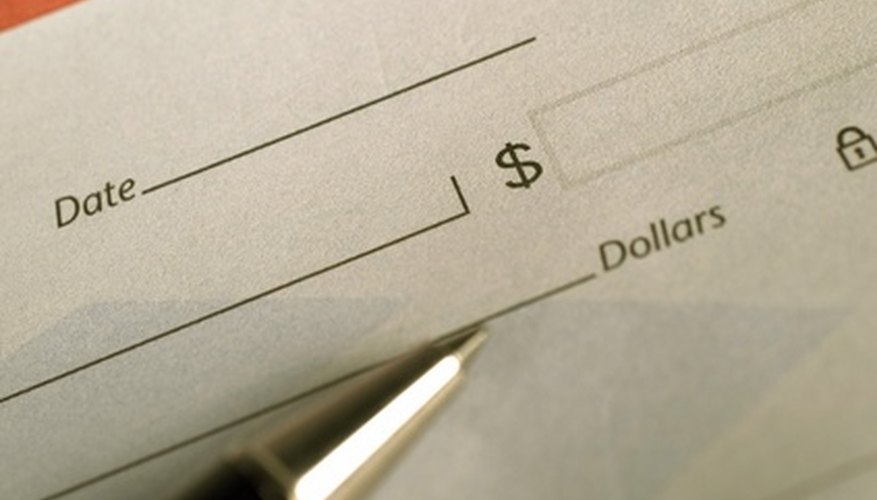The last line on all checks printed in the United States and many other countries, including the United Kingdom and several European nations, is printed using a special character font family and technology known as MICR (pronounced my-ker). MICR is an acronym for "magnetic ink character recognition," a technique primarily used by airlines for ticket verification and banks to verify the validity of signed checks and enhance security. However, the technology is expensive and often impractical when used in small businesses. MICR characters are printed with a magnetic toner or ink made of iron oxide. A MICR reader (or scanner) magnetises the MICR characters before it decodes the complete text. The characters are then run through a MICR read head -- a device that converts the characters to waveform, which are then identified by the system.
Advantage: Ease of Readability and High Security
The use of iron oxide-based ink ensures MICR characters are readable even if a document is obscured by miscellaneous marks or overprinted. MICR systems provide a high level of security since MICR characters are required to follow a stringent format and use precise iron oxide ink, which makes the documents difficult to forge.
Advantage: Small Deciphering Error Rate
The error rate for reading MICR characters is small as compared to other character recognition systems. MICR scanners precisely and accurately decipher the characters, provided they follow standards set out by the American National Standards Institute (ANSI) and the American Bankers Association (ABA). For example, there is typically only one read error for every 20,000 to 30,000 checks processed by a MICR scanner.
Disadvantage: Time Consuming Standards
The printing of MICR is demanding, setting precise but difficult-to-achieve standards, which is a distinct disadvantage in terms of time consumption. The American National Standards Institute (ANSI) implements and manages all MICR printing standards. It sets precise requirements for MICR character fonts, MICR registration, paper-moisture content and grain and toner adhesion. All MICR character fonts must meet ANSI requirements. Standard X9.27-1995 lays down font standards while ANSI standard X9.7-1990 specifies line positioning of MICR characters. Additionally, the two published standards currently used for MICR include the American Bankers Association (ABA) standards 092200 and ABA 092700, which stipulate how and where the MICR characters are printed on the check. ABA 092200 specifies the printing requirements for MICR and ABA 092700 stipulates printing locations and placement. MICR fonts that do not adhere to these standards will lead to rejected checks at banks and processing errors at other institutions.
- The printing of MICR is demanding, setting precise but difficult-to-achieve standards, which is a distinct disadvantage in terms of time consumption.
- Additionally, the two published standards currently used for MICR include the American Bankers Association (ABA) standards 092200 and ABA 092700, which stipulate how and where the MICR characters are printed on the check.
Disadvantage: Expensive Equipment
MICR readers are expensive and capable of recognising only MICR fonts written in a specific format. MICR printers run on cartridges that cost far more than plain ink toner cartridges. As of March 2010, a single HP 05A MICR toner cartridge costs £71 and an HP 42X MICR toner cartridge costs £161, as opposed to the price of a single HP 60XL inkjet toner cartridge that costs £21.
